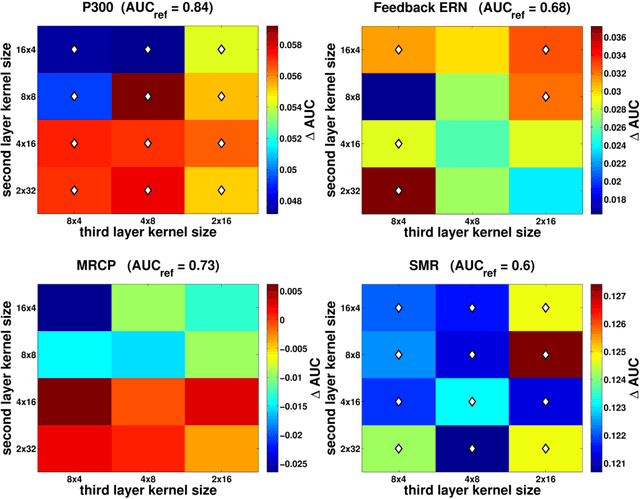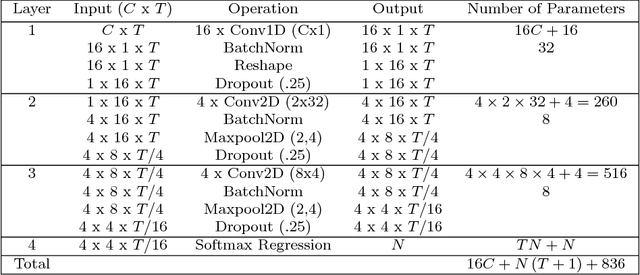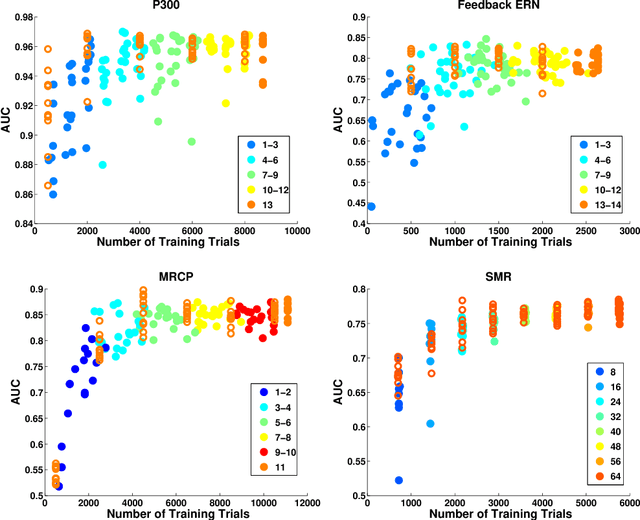EEGNet: A Compact Convolutional Network for EEG-based Brain-Computer Interfaces
Paper and Code
May 16, 2018



Brain computer interfaces (BCI) enable direct communication with a computer, using neural activity as the control signal. This neural signal is generally chosen from a variety of well-studied electroencephalogram (EEG) signals. For a given BCI paradigm, feature extractors and classifiers are tailored to the distinct characteristics of its expected EEG control signal, limiting its application to that specific signal. Convolutional Neural Networks (CNNs), which have been used in computer vision and speech recognition, have successfully been applied to EEG-based BCIs; however, they have mainly been applied to single BCI paradigms and thus it remains unclear how these architectures generalize to other paradigms. Here, we ask if we can design a single CNN architecture to accurately classify EEG signals from different BCI paradigms, while simultaneously being as compact as possible. In this work we introduce EEGNet, a compact convolutional network for EEG-based BCIs. We introduce the use of depthwise and separable convolutions to construct an EEG-specific model which encapsulates well-known EEG feature extraction concepts for BCI. We compare EEGNet to current state-of-the-art approaches across four BCI paradigms: P300 visual-evoked potentials, error-related negativity responses (ERN), movement-related cortical potentials (MRCP), and sensory motor rhythms (SMR). We show that EEGNet generalizes across paradigms better than the reference algorithms when only limited training data is available. We demonstrate three different approaches to visualize the contents of a trained EEGNet model to enable interpretation of the learned features. Our results suggest that EEGNet is robust enough to learn a wide variety of interpretable features over a range of BCI tasks, suggesting that the observed performances were not due to artifact or noise sources in the data.
 Add to Chrome
Add to Chrome Add to Firefox
Add to Firefox Add to Edge
Add to Edge